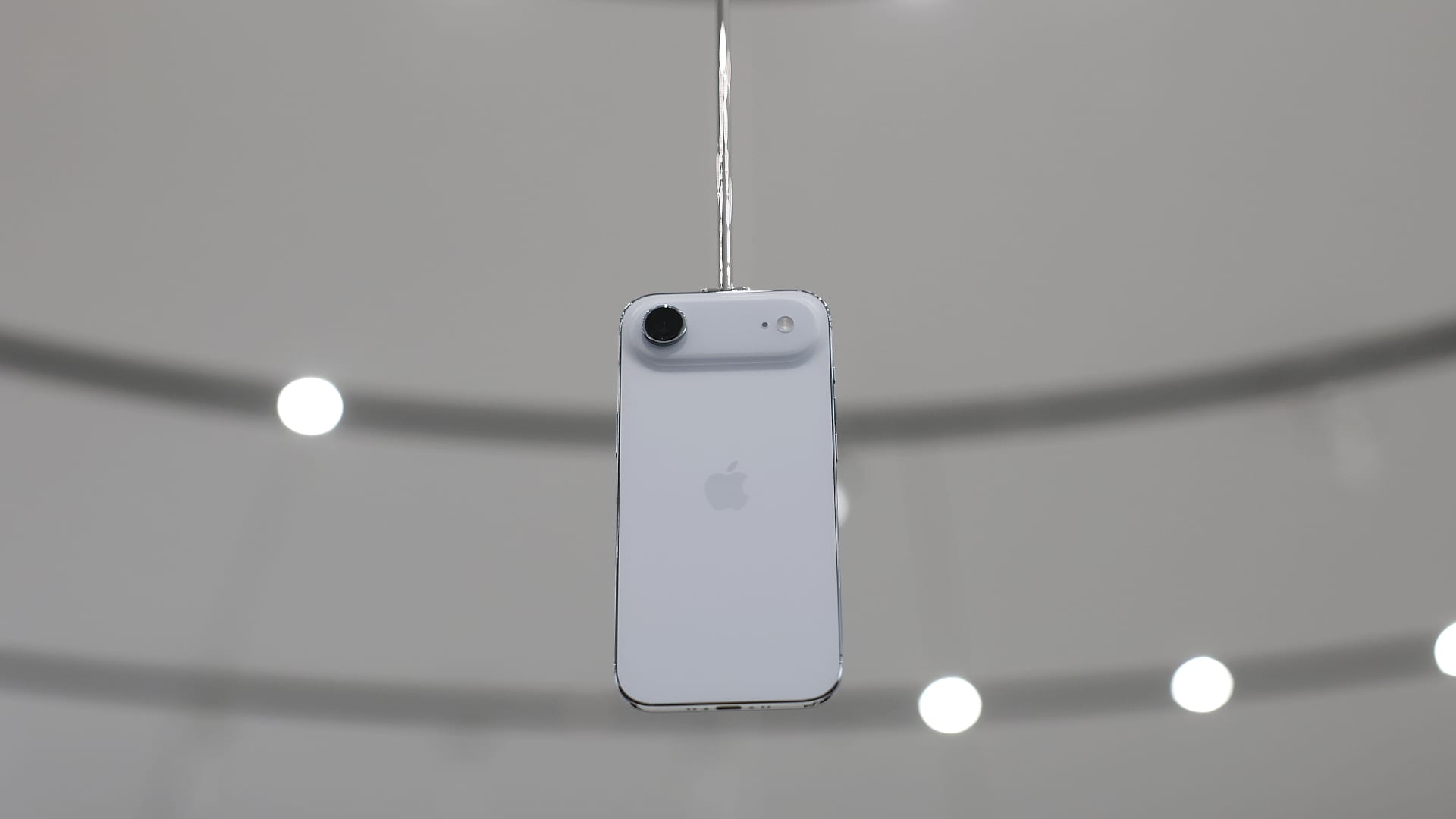CEO of Apple Tim Cook looks at the new iPhone 16 with Siddharth Suryanarayan and Aditi Rao Hydari as Apple holds an event at the Steve Jobs Theater on its campus in Cupertino, California, U.S. September 9, 2024.
Manuel Orbegozo | Reuters
Apple’s Thursday earnings report is critical for investors because it includes the first official sales figures for the iPhone 17.
The report covers sales through the end of September, which includes a little more than a weeks worth of sales data for the latest Apple smartphones that went on sale Sept. 19. In recent weeks, Wall Street has been boosting Apple stock because it looks like the iPhone 17 is a hit based on early industry estimates.
But investors will be watching closely about what Apple says regarding demand to see if this year ends up being a “super-cycle,” or the first year of growth after iPhone revenue peaked in fiscal 2022. Analysts polled by FactSet expect that Apple surpassed that high mark in fiscal 2025.
Third-party estimates from analysts and industry researchers have signaled that iPhone sales are up this cycle, especially for the entry-level iPhone 17, which got the fastest chip and a screen with a faster refresh rate, and the iPhone 17 Pro models, which have a full aluminum frame and improved battery life.
But the newest iPhone model, the iPhone Air, doesn’t appear to be selling well so far.
“Some reports have highlighted a more muted iPhone 17 Air uptick than we believe some had initially anticipated,” Wells Fargo analyst Aaron Rakers wrote this month.
It’s a familiar story for Apple, which sees the strongest growth when it introduces new iPhone models that expand the lineup. But since it went to a four-phone lineup in 2020, Apple has struggled with the fourth phone’s sales, which have lagged behind the basic iPhone and the Pro models. Since 2020, Apple swapped out the “Mini” iPhone for a “Plus” iPhone with a bigger screen, and now, it’s trying the “Air.”
A new iPhone Air is on display during an Apple special event at Apple headquarters on Sept. 9, 2025 in Cupertino, California.
Justin Sullivan | Getty Images
While Apple doesn’t separate sales numbers for individual devices, CEO Tim Cook and CFO Kevan Parekh often provide some color during earnings calls about product launches during the quarter and how much demand the company is seeing.
When Apple launched the $999 iPhone Air in September, Tim Cook called it an “iPhone that feels like a piece of the future.” Price-wise, it lands between the iPhone 17, starting at $799, and the iPhone 17 Pro, which starts at $1,099.
The iPhone Air is thinner and lighter than Apple’s other phones, but that also comes with compromises. It only has one camera lens, and its battery life is shorter than its siblings. Still, it’s the only iPhone this year with a significant design change, and reviews have been positive.
China sales could also boost the model. It didn’t go on sale in China until earlier this month, and it sold out in minutes, according to the South China Morning Post.
Still, buyers appear to prefer what they’re already familiar with.
Nikkei, a newspaper in Japan, reported last week that Apple “drastically” slashed iPhone Air component orders with its partners, but is boosting orders for its other phones.
Ming-Chi Kuo, a TF International Securities supply chain analyst known for forecasting future Apple moves, followed that report by saying that the iPhone Air had fallen short of expectations.
“This indicates that the existing Pro series and standard models already cover the majority of high-end user demand well, leaving little room to carve out new market segments and positioning,” Kuo posted on social media.
In many ways, the iPhone Air underperforming is not a sea change for the company.
Since 2020, Apple has released four new phones in the fall. But one of the four new models has consistently lagged its siblings in sales, and Apple has swapped the model out over the years to find something that works.
Before the Air, it was the iPhone “Plus,” in the middle of the lineup with the same specs as the main iPhone but with a larger screen. It was priced at $899. Apple tried that from 2022 through 2024.
Goldman Sachs analysts said that lead times, or how long Apple says it will take to ship a device on its website, suggested that the iPhone Air had similar demand to its predecessors.
“Lead times for the iPhone Air were initially below the iPhone 16 Plus, but have now surpassed those of the iPhone 16 Plus and are just below those of the iPhone 15 Plus,” wrote Goldman Sachs analyst Michael Ng in a note this month.
Before that, Apple’s fourth phone was the iPhone Mini, which cost less than the main iPhone when it was introduced in 2020, but consumers didn’t flock to its smaller screen.
Analysts say that the iPhone Air could be a building block towards a more diverse lineup that could include a folding iPhone. Its thin design resembles what half of a folding phone could look like, tech critics say. And the fact that the iPhone Air doesn’t have a number suggests it might not get annual updates anyway.
If Apple’s other iPhones are seeing surging sales, it might not matter to investors if the Air is lagging, especially if new designs at least keep the lineup feeling fresh.
“We believe Apple has the ability to maintain the relevance of smartphones through form factor updates to iPhone,” wrote Ng, the Goldman analyst. “For example, after the debut of the thinner iPhone Air form factor this year, Apple is expected to launch its first foldable iPhone in 2026, followed by an all-screen display iPhone in 2027.”
Apple didn’t respond to a request for comment.
WATCH: Apple’s big move is testing its final resistance, says Fairlead Strategies’ Katie Stockton






